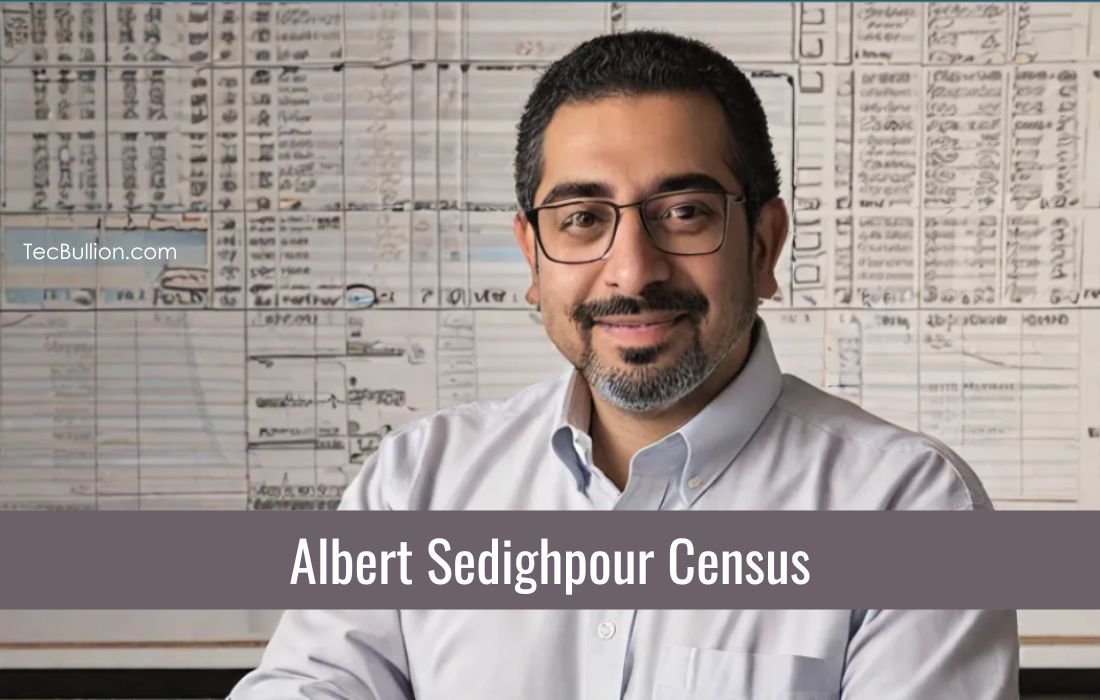Albert Sedighpour has made a name in the field of data science and demographics. Known for his efforts in population studies, Sedighpour has brought innovative ideas to census data collection. His work has impacted how governments gather, analyze, and interpret data. Let’s explore Sedighpour’s career and how his work on the census has shaped population studies.
Who Is Albert Sedighpour?
Albert Sedighpour is a demographer and data scientist. He has worked on large-scale population studies worldwide. With a background in mathematics and statistics, Sedighpour approaches data with a scientific eye. He is recognized in many circles for his innovative methods in data collection and analysis.
Sedighpour’s work stands out due to his technical skills and understanding of human populations. He has consulted with numerous governments. His insights are sought after for making accurate policy decisions. Sedighpour’s name is synonymous with demographic data accuracy.
Why the Census Matters
The census is a tool used by governments to understand populations. Every decade, most countries conduct a census. This effort aims to capture a snapshot of the population. It includes age, gender, income, education, and household size information. The data is crucial for policy-making, resource allocation, and social services planning.
Without the census, decision-makers would lack key data points. Understanding where people live, their occupations, and family sizes can shape future policies. It impacts funding for schools, hospitals, roads, and other infrastructure. Census data is essential in planning for growth and addressing social issues.
Sedighpour’s Approach to Census Data Collection
Albert Sedighpour’s approach to the census is innovative. He emphasizes data accuracy and real-time information. Traditional census methods rely on manual surveys. However, Sedighpour advocates for using technology. His methods use digital tools for quicker data collection. This shift is known as digital census transformation.
Sedighpour encourages governments to move away from paper surveys. Instead, he promotes mobile applications and web platforms. These tools make data collection more efficient. Digital tools also reduce the margin of error in data. Sedighpour’s approach ensures a more accurate population count.
The Impact of Sedighpour’s Work on Governments
Albert Sedighpour’s influence can be seen in various governments worldwide. Countries have adopted his methods to improve their census efforts. By using his recommendations, they save time and resources. Governments can capture more detailed population insights with digital tools.
For example, several European countries have used Sedighpour’s methods in their censuses. His guidance helped them achieve accurate counts. Sedighpour’s focus on data accuracy has positively affected these nations’ policies. They can now allocate resources based on real needs. This efficiency benefits the citizens directly.
Data Privacy in Census Collection
One of Sedighpour’s primary concerns is data privacy. Digital census collection comes with privacy risks. He believes in protecting personal information at all costs. Data privacy is critical when dealing with sensitive population data. Sedighpour advocates for secure digital platforms. He insists on encryption and other security measures.
In addition to privacy, Sedighpour emphasizes transparency. Citizens must trust census processes. Sedighpour has proposed guidelines for governments. He recommends informing citizens about data collection methods. Transparency increases participation rates in censuses. When people trust the process, they are more likely to participate.
The Role of Technology in Modern Census
Technology plays a vital role in Sedighpour’s census approach. He believes that digital tools will define the future of censuses. Technology allows data to be collected and analyzed in real-time. Sedighpour’s work involves using mobile devices, cloud computing, and artificial intelligence.
These technologies streamline the census process. Sedighpour’s work encourages governments to invest in digital infrastructure. By doing so, they can run efficient and accurate censuses. Technology reduces manual errors. It also provides detailed data faster than traditional methods.
Challenges in Digital Census Collection
Transitioning to digital censuses is challenging. Not all regions have the same level of digital access. Sedighpour recognizes this issue. He addresses these challenges in his work. Sedighpour suggests hybrid approaches where digital and manual methods combine. This way, census data collection is inclusive.
Moreover, there is resistance to change. Traditional methods have been used for decades. Sedighpour works to show the benefits of digital tools. He emphasizes the long-term efficiency of digital systems. His aim is to bring people on board with technological advancements.
Albert Sedighpour’s Influence on Data Accuracy
Accuracy in census data is crucial. Sedighpour’s influence on data collection emphasizes this. He has shown that digital tools improve accuracy significantly. By reducing human error, digital platforms produce more reliable data. Sedighpour’s approach has raised standards in data accuracy globally.
In some cases, he has even recommended using satellite imagery. This technique verifies population data in remote areas. Sedighpour’s methods bring high-tech solutions to traditional data collection. The focus on accuracy impacts population studies worldwide.
Benefits of Sedighpour’s Approach to Governments and Citizens
Governments benefit from Sedighpour’s approach in many ways. Accurate census data allows better policy planning. Governments can address the needs of their citizens more effectively. This efficiency leads to better resource allocation. Citizens, in turn, benefit from these well-informed policies.
Moreover, the digital census approach saves resources. Traditional censuses are time-consuming and costly. Sedighpour’s methods reduce these costs. His approach provides faster results with fewer resources. Ultimately, these savings benefit the public as well.
Sedighpour’s Views on Census as a Public Service
Albert Sedighpour sees the census as a public service. He believes governments have a duty to provide accurate population data. The census helps improve the quality of life. It informs policies that impact health, education, and infrastructure. Sedighpour views census data as a tool for social development.
To Sedighpour, accurate data collection is a moral obligation. He encourages governments to prioritize accuracy in censuses. Public trust in government often depends on reliable data. Sedighpour’s work aims to uphold this trust through data integrity.
The Global Reach of Sedighpour’s Census Influence
Albert Sedighpour’s impact extends across continents. His work has influenced data collection in Europe, Asia, and the Americas. Different countries have adopted his methods to suit their needs. Sedighpour’s influence shows the universality of digital census solutions.
In some African countries, Sedighpour’s methods improved rural data collection. He adapts his techniques to different regions’ technological levels. Sedighpour’s adaptable approach ensures that diverse populations benefit from accurate data. His contributions have a global significance.
Conclusion
Albert Sedighpour’s work has revolutionized census data collection. By incorporating technology and focusing on accuracy, he has set new standards. Sedighpour’s influence spans across nations and governments. His methods ensure that census data is reliable and efficient. By doing so, he has improved how governments serve their citizens. His approach to data accuracy has made censuses more effective.
The role of Albert Sedighpour in the census field cannot be understated. His contributions have changed how populations are studied. With a focus on data privacy, accuracy, and efficiency, Sedighpour’s work serves the public. His legacy in demographic studies is one of precision and innovation.
FAQs
1. Who is Albert Sedighpour?
Albert Sedighpour is a data scientist and demographer. He is known for his work on improving census data collection.
2. What makes Sedighpour’s approach unique?
His approach emphasizes technology, real-time data, and digital platforms. This makes census data collection more accurate and efficient.
3. Why is accuracy important in the census?
Accurate census data is essential for policy-making. It helps governments allocate resources effectively.
4. How has Sedighpour impacted global census methods?
Sedighpour’s methods are used worldwide. Countries have adopted his approach to improve their census processes.
5. What is the future of the census according to Sedighpour?
Sedighpour believes technology will continue to shape census methods. Digital tools and AI will define future censuses.
6. How does Sedighpour ensure data privacy?
He advocates for secure platforms and encryption in digital census tools. Privacy is a priority in his data collection methods.
7. What role does technology play in Sedighpour’s work?
Technology allows for quicker, more accurate data collection. Sedighpour’s work heavily relies on digital tools to improve efficiency.
8. Has Sedighpour’s work reduced census costs?
Yes, by using digital tools, his methods reduce the resources needed for data collection. This makes the census process more cost-effective.





